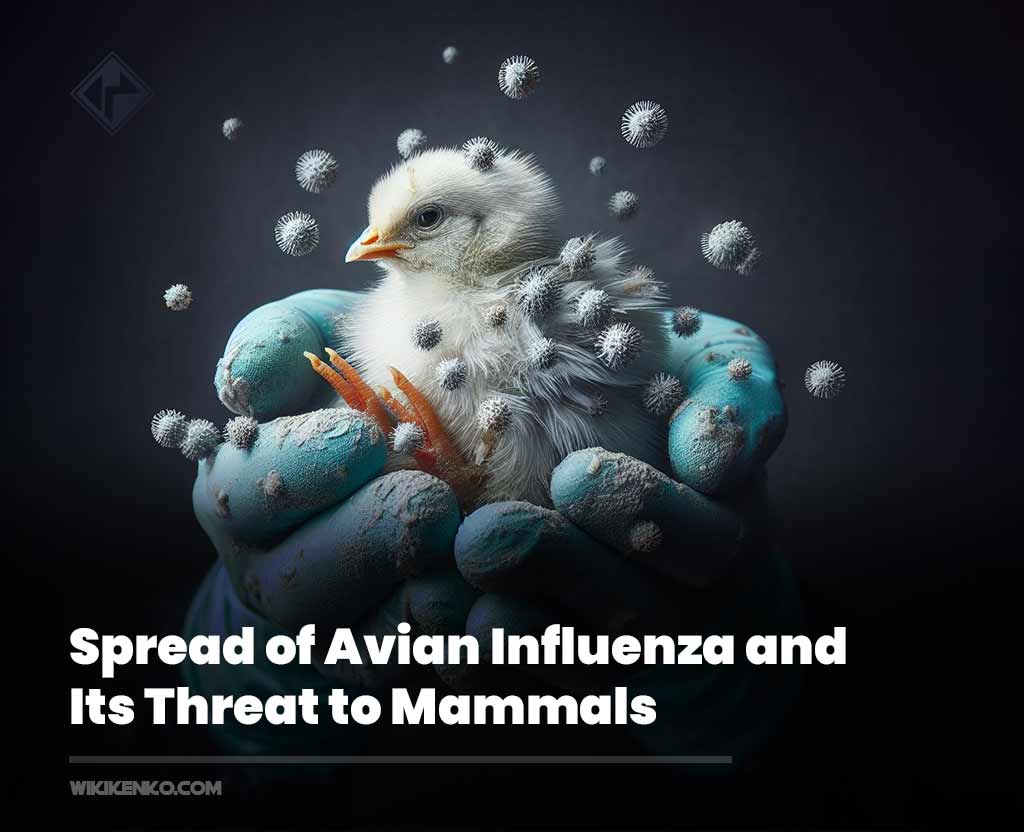The aggressive avian influenza virus, including strains like H5N1 and H5N8, is rapidly spreading globally through infected migratory birds. This not only leads to the death of thousands of birds but also poses a significant threat to mammals such as seals, sea lions, and foxes.
The Origins and Global Spread
Highly pathogenic avian influenza strains like H5N1 and H5N8 are believed to have emerged in poultry farms in East Asia. The “Scientific Working Group on Avian Influenza and Wild Birds,” established by the United Nations (UN), suggests that the expansion of global poultry production, especially in China and Southeast Asia, has contributed to the rapid spread of these aggressive avian influenza strains.
In the past, when avian influenza was detected in poultry farms, a common response was culling, which involved the mass killing of infected birds to prevent further spread. This approach helped control the highly pathogenic viruses within poultry populations. However, things have changed since the summer of 2021.
The New Challenge: Avian Influenza in Wild Birds
The unique farming practices in Asia, such as releasing ducks into harvested rice fields, create opportunities for direct contact between wild bird populations and infected poultry. This close interaction has led to the transmission of avian influenza from domestic birds to wild birds.
Wild birds, particularly those living in water, were traditionally the natural reservoir for low pathogenic influenza A viruses, which typically did not cause illness in birds or poultry. However, when these mild avian influenza A viruses mix with highly pathogenic strains like H5N1, it gives rise to dangerous variants with the potential to infect a wide range of species, including mammals.
The Changing Patterns
Avian influenza used to follow a seasonal pattern, primarily appearing in the fall and winter when migratory birds from the northeast carried the virus. It would then dissipate as these birds returned in the spring. However, this seasonal predictability has disappeared.
The virus has successfully adapted to water-based wild bird populations, allowing it to circulate year-round. This shift is now evident in North America and is expected to continue in South America. Consequently, avian influenza is currently affecting numerous countries in South America.
The Impact on Mammals
The threat of avian influenza extends to mammals that feed on infected birds. In areas like the Pacific coasts of Chile and Peru, thousands of dead seals, sea otters, and sea lions have been discovered. This massive die-off is a result of mammals preying on infected birds.
While there is no conclusive evidence of mammal-to-mammal transmission, there are concerns. In Latin America, tens of thousands of sea lions have succumbed to the virus, leading to suspicions of potential inter-species transmission.

The Potential Human Risk
While human infections with avian influenza have been rare, they can’t be ruled out. The virus’s broadening host range and the existence of multiple mutated strains pose a potential threat.
Some variants of avian influenza, like H3N8, have shown the ability to transmit between mammals and have successfully reproduced in human bronchial and lung cells. While human transmission is not yet common, continued monitoring of avian influenza strains, including H3N8, H6N1, H10N8, and H5N6, is essential to assess their potential for human transmission.
In anticipation of increased human risk, the World Health Organization (WHO) has developed suitable vaccine candidates for the current H5N1 virus. If the need arises, vaccine production can commence swiftly.
The Future of Avian Influenza
The containment of avian influenza in wild animals is a challenging task, and there are limited options for effectively protecting wildlife. However, efforts to safeguard poultry production and prevent the spread of the virus from wild birds back to domestic poultry remain crucial.
The situation is further complicated by the increasing prevalence of free-range poultry production, which exposes birds to greater contact with wild animals. Consequently, the European Commission has permitted poultry vaccination against highly pathogenic avian influenza since 2023.
The threat of avian influenza is not only confined to birds but also extends to various mammals. It represents an evolving challenge that requires continuous monitoring and international cooperation to mitigate its impact and potential risk to humans.










